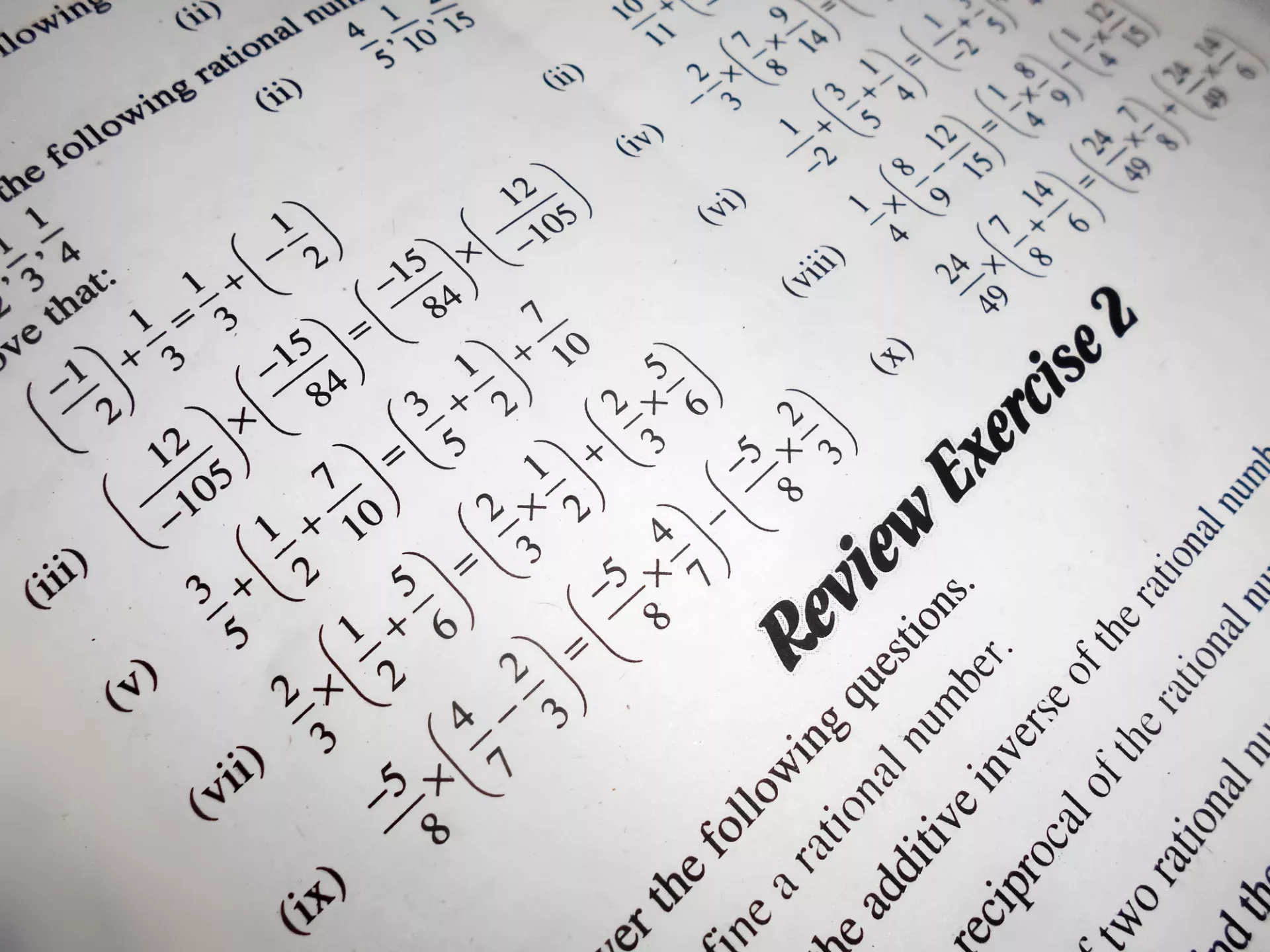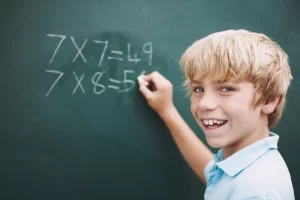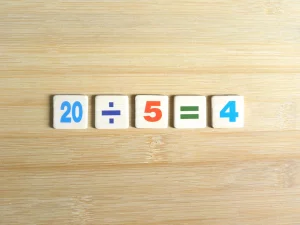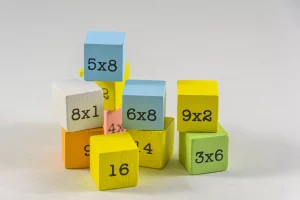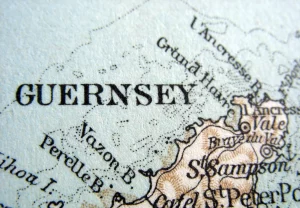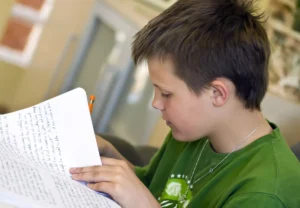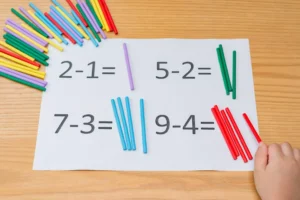Difficult GCSE Level Maths Questions and How a Maths Teacher would Solve Them
Getting through the GCSE maths course requires working on as many practice questions and solutions as possible and learning the different methods for solving problems and equations.
Consequently, students can struggle with absorbing so much information, but the old saying ‘practice makes perfect’ applies as much to GCSE maths as to everything else.
Complete Questions for Practice
1. Jackson is trying to figure out the density of a woodblock in the shape of a cuboid; the density will then be deducted in g/cm. The length is 13.2 cm, the width is 16.0 cm, the height is 21.7 cm, and the mass is 1970 g, correct to the nearest 5 g.
Give your answer to the nearest degree, show all of your work, and explain.
Answer
Density equals mass divided by volume. Figure out the upper and lower bounds of the dimensions.
L: 13.15 ≤ 13.2 < 13.25
W: 15.95 ≤ 16.0 < 16.05
H: 21.65 ≤ 21.7 < 21.75
Mass: 1967.5 ≤ 1970 < 1972.5
Calculate the upper bound volume and the lower bound volume.
Upper bound volume: 13.25 × 16.05 × 21.75 = 4625.409375
Lower bound volume: 15 × 15.95 × 21.65 = 4540.925125
Now, we can work out the density, both the upper and the lower bounds.
The upper bound will be deducted by using the upper bound of the density divided by the lower bound of the volume: 1972.5 ÷ 4540.925125 = 0.434382
For the lower bound of the density, we’ll use the lower bound of the mass over the upper bound of the volume: 19675 ÷ 4625.409375 = 0.425367
Use these two numbers in two significant places. The upper bound will be 0.43, and the lower bound will also be 0.43, as the number in the third decimal place is (5); hence, it’ll increase the 2 to 3.
2. We have the following formula with (nth term) being repeated. You need to answer and simplify the formula to prioritise the (a term).
p=n2 + an + a
Answer:
Cross multiplication: P (n+a) = n2 +a
Expansion: Pn + Pa = n2 + a
Putting (a) on one side: Pa – a = n2 – Pn
Removing (a) factor: a (P-1) = n2 – Pn
Making (a) the subject: a = n2 – Pnp – 1
3.

In front of you is a vector problem. You’ve got a quadrilateral (CDEF). These characters also represent the sides of this diagram, and most sides have another name.
CD = a
DE = B
FC = a – b
A) Name FE using the terms a or b. Give your solution in the simplest form.
Answer:
Primarily, students must understand that each side goes in one direction only (and not backwards). For example, CD starts at C and ends at D, meaning that DC is a separate side.
Another piece of information that you can prove without a calculator is that (M) is the mid-point of DE. As a result, DM equals 12b, and ME equals 12b as well.
To discover what the FE means in a and/or b language, you need to move from the angle F to the angle E, calculating all the sides involved.
That is a-b+a+b. The (-b) and the (+b) cancel each other out, leaving us with (2a), which is the solution for this maths equation.
B) We’ve already mentioned that M is the midpoint of DE. Now, if you look closely, you’ll see a dash stretching from F to M with a dot on it labelled X. This dot makes the ratio FX:XM equals n:1.
Now you need to work out what the (n) stands for. Keep in mind that the dash CXE, which isn’t drawn, is a straight line.
Answer:
First, we need to work out C to E, so, choosing the easier side, we’ll go C to D (a), then D to E, which is (b), leading to the equation CE (a+b).
Then, we should work out the distance FM. Again, we’ll choose the easiest side which is FC (a-b) + CD (a) + DM (12b). So, FM equals a – b + a + 12b. That will add up to 2a – 12b.
The next step will be figuring out FX which is in simple words n (2a – 12b) = 2an – 12b. The last step to knowing the value of (n) is to know CX, which involves CF + FX.
We’ve mentioned before that reading a side ‘backwards’ gives a different result from reading it forwards, so since FC equals (a-b), CF would equal the opposite of that (-a+b).
CX= -a+b + 2an – 12bn
Let’s facilitate that: -a + 2an -12bn
Factorization: a (-1 + 2n) + b (1 – 12n)
We need to place this entire equation on one line. So, whatever we do to the left side, we’ll do to the right side; hence, keeping the balance on both sides of the equation.
New equation: -1 + 2n = 1 – 12n
Add half: 212n = 2
Divide by 212 = n = 45
Ratio: 45: 15 = 4:1
N = 4
4.

Here, we have a rectangle containing three identical circles. Each one of these circles is touching the others and the sides of the rectangle. The radii of these circles are equal, and each length is 24 mm.
Use this diagram to work out the area of the rectangle and provide your answer correct to THREE significant figures.
Answer:
Just like our previous problem, this one requires a little bit of imagination, and of course, trigonometry skills. Let’s start with the easy part first, which is working out the width of the rectangle.
If you look at the upper two circles, you’ll find that you can connect a line from the point where the circle touches the rectangle on the right side to where the other circle touches the rectangle on the left side. This line passes by four radii, two for each circle. Hence, the width of the rectangle is 24×4 = 96 mm.
Now, let’s try to find out the length of the rectangle. Trying to use the same method for the length as you did with the width won’t work. There will be an overlap of radii between the lower circle and the upper two.
Instead, you will need to draw a triangle connecting the three centres of the circles so that each centre represents one of the triangle angles. Since the three sides of this triangle are equal, as each one comprises two radii, the triangle will be equilateral, and each of its angles will add up to 60°.
When that happens, you can quickly figure out the triangle’s height by multiplying one side by Sin (60). Each side of this triangle equals two radii (48 mm).
As a result, Median = 48 x Sin (60) = 41.569 mm. The last step is to add the final two radii to get the full measurement. So, 41.569+24+24 = 89.569 mm.
Finally, we’ve got our length. We can multiply it by the width to get the area which is 9×96 = 8598.624 mm². Let’s correct that to three significant figures; the area is 8600 mm².
The Challenges of GCSE Maths
GCSE exams are tough – students are expected to learn multiple skills and absorb a considerable amount of information that they must then recall during the exam. They need to be familiar with
trigonometry, geometry, algebra, and be able to apply them correctly when problem solving. They need to achieve the perfect balance of maths skills and calm reasoning. However, there are other aspects to consider.
The availability of materials and practice questions is important here; students need the chance to apply their knowledge and understanding of the curriculum and gain the confidence to excel in exams.
The language of the questions and expressions used are also critical. A good maths teacher can explain to their pupils how to interpret question texts, but students must learn to simplify the problems for themselves so that they are not hindered during exams.
What Is the Hardest Topic in GCSE Level Maths?
The most arduous topic in the GCSE maths course depends on students’ individual strengths and weaknesses and problem-solving skills. Nevertheless, when asked this question, many students identify geometry as the most difficult topic.
Final Thoughts
Maths is an extraordinarily broad subject which covers a vast array of sub-topics, each exerting their own fascination. Most maths students develop a favourite topic, and many go onto study it in greater depth at sixth form college and university, but enthusiasm for maths is greatly dependent on having a teacher that sparks curiosity.
Our advice to students is to study hard, prepare well, make time for rest and relaxation, and take your exam with confidence! And if you feel that one of our maths tutors in Jersey can help, we will be ready and waiting!


